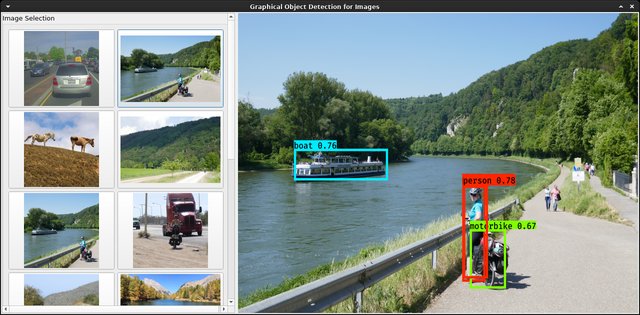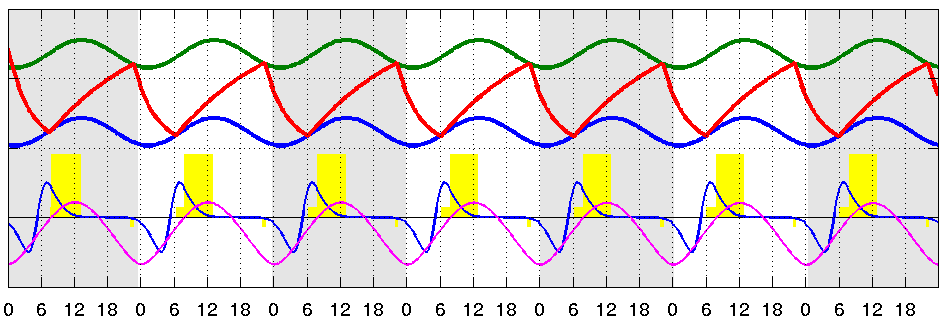IT Playground
When weather does not inspire me for outdoor activities, I enjoy diving into various IT topics to gain and maintain the knowledge I keep teaching in school. Basically, I'm fascinated and attracted by Open-Source IT software or standards like
- Linux
- Python, JS
- MySQL/MariaDB
- Arduino

Since my time in university, I've been fascinated by the possibilities of artificial intelligence. Back then, we'd learned how to recognize handwritten digits. Today, I'm intrigued by the scientific achievements made available by AI frameworks like TensorFlow.
I suppose many software projects would better meet user needs if they were open source for three reasons:
- as a user, I have the freedom to customize and improve the software as I wish. This could actually encourage more people to learn programming.
- as a user or organization, I can check the source for malicious or unwanted parts (like trackers, spyware etc.)
- by buying or ordering only open source products, my organization has the freedom to adapt the software to meet actual needs.
Saying this, I am well aware that open source software does cost money (or at least a lot of time) to develop, test and distribute.
Notice: Schirmer Scientific Systems is now Green-ORCA :: Operations Research Computing and Analysis Schirmer
- Details
- Category: Research Projects
An ongoing project that has already been the core of my Diploma thesis:
In Collaboration with the Neuroinformatic Research Group at the University of Applied Science in Schmalkalden, a mathematical model for human Sleep-Wake-Rhythm prediction is proposed, that accounts for both Sleep homoeostatis and adaption of the circadian day to daylight.
The model shown above is a combination of the 2 Process Model [Daan,Beersma,Borbely] and the Phase Response Curve [DeCoursey, Pittendrigh]. The 2 Process Model (2PM) consists of the upper and lower sinodial circadian thresholds for sleep onset (green) and waketime (blue), further called Process C. In between, the sleep pressure (S) raises during waketime and falls during sleep. If one of the thresholds of Process C is met, S changes from Sleep to Wake state or vice versa.
The Phase Response Curve (PRC, thin blue line) is a mathematical model that accounts for the adaptation of the inner circadian clock to the solar day. Based on various experiments it was verified, that bright light in the subjective morning would accelerate the circadian clock, and bright light in the subjective evening slows it. Habitual sleeptime at night prevents the circadian clock to be altered too much. In the proposed combined model, both Process C and PRC run at the same circadian period (23.5 to 25hrs). If light hits an active part of the PRC, the phase shift is applied instantly to Process C and accumulated to later shifting on PRC. Further, the total sum of absolute product of light and PRC value during the day is calculated for attenuation of both PRC and Process C.
Humans happen the have different Sleep-Wake behaviours (further called Chronotypes), ranging from "Larks" awaking before sunrise after only 4.5hrs of sleep to "Owls" awaking just before noon after perhaps 12hrs of sleep. Various model parameters must be fitted to account for people with different chronotypes, which was achieved using Genetic Algorithms. The illustration below shows the fitting of a simulated Sleep-Wake-Cycle with fitted model parameters to the Sleep-Wake-Cycle recorded in a sleep diary over almost 150 days.

- Details
- Category: Research Projects
Based on our Sleep-Wake Model, shift schedules can be simulated for different chronotypes and examined for their suitability regarding sleep deprivation, forced waking and accumulated sleep lacks. Goal is to find schedules with reduced impact on these factors, hence provide better vigilance during work hours.

Subcategories
Research Projects Article Count: 7
Since my studies, I am fascinated by simulation and computing algorithms inspired by nature. Be it ant colony optimization for fleet routing, be it genetic algorithms for optimizing high dimensional paramterization problems, with my research company Green-ORCA I can tackle it.
Web Design Article Count: 3
Back in 1996 I started learning HTML and CSS. The internet bandwidth was still so slow that one thought twice what size of pictures to upload, and interactivity was mainly achived with simple forms. Times have changed, and the once mainly static world wide web turned into a giant market place and communication platform.
Server-side technologies like PHP, ASP or Java plus browser-embedded JavaScript (JS) and CSS enabled platforms like Facebook or Amazon to deliver content dynamically, database-driven, on demand. The advent of AJAX greatly improved the browsing experience by avoiding page reloads and enabling true interactivity like search suggestions.
And here we are - JS-based server-side frameworks (like Meteor) with extensive code generators for client and server-side make full-stack development extremely productive, and perhaps sooner or later replace the classic server-side and client-side code mess.
However, for the time being this page is mainly a technical playground for me, based on Joomla and a few PHP and JS snippets of my own.
